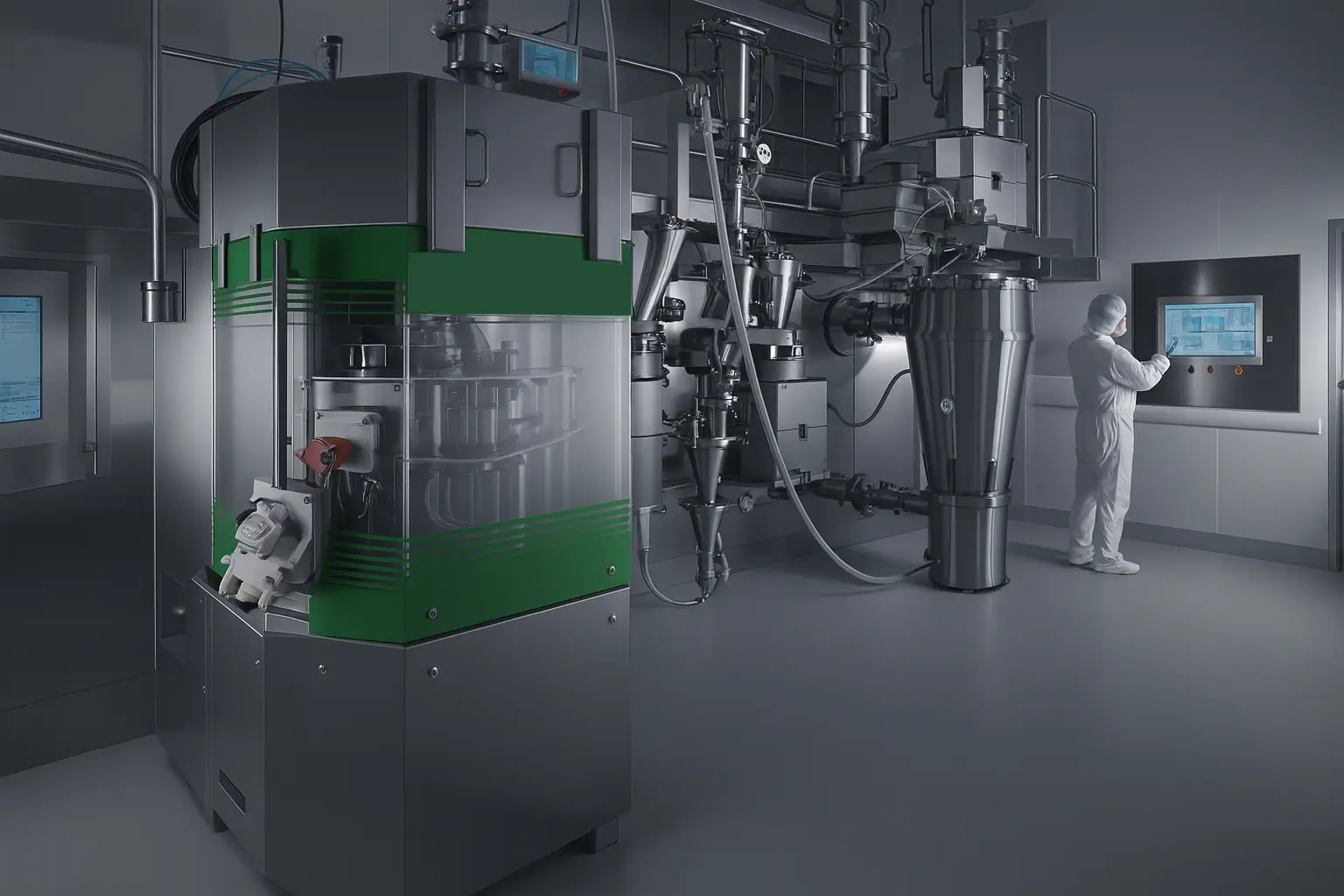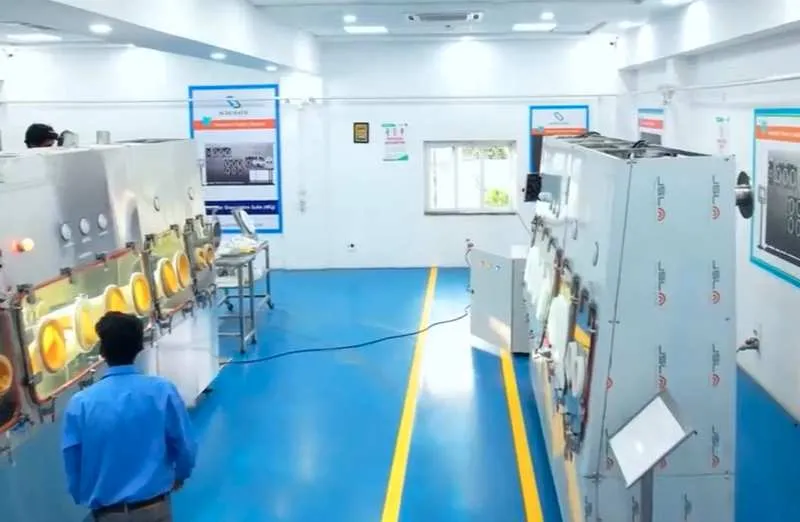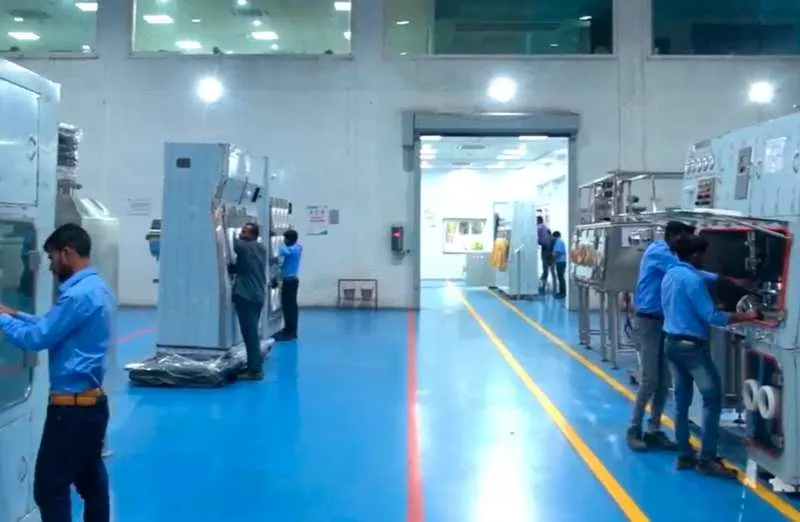

June 9, 2025
Micronisers vs. Milling: Choosing the Right Powder Processing Solution for Your Pharmaceutical Needs
In the pharmaceutical industry, precision is paramount. When it comes to powder processing, achieving the right particle size directly affects bioavailability, solubility, and stability. But choosing the most effective method, micronisation or milling, requires careful consideration of multiple factors.
At Schematic Engineering Industries, we help pharmaceutical manufacturers assess the advantages and limitations of both methods to match their process goals, product sensitivity, and regulatory needs. Below, we break down the core differences and practical implications of each approach.
What Is Micronisation and How Does It Work?
Micronisation is a high-precision powder processing method that reduces particle size using fluid energy, typically through a jet mill. Particles collide with each other at high velocity, leading to size reduction without mechanical contact.
Key Features:
- Produces ultrafine particles, often <10 microns
- No moving parts, reducing metal contamination
- Ideal for temperature-sensitive or reactive compounds
- Minimal heat generation during processing
Schematic Engineering Industries offers jet mills with closed-loop configurations that integrate easily into cleanroom setups and support sterile production.
How Does Milling Differ from Micronisation?
Milling encompasses a range of mechanical size-reduction techniques, such as hammer mills, pin mills, and ball mills. These systems use physical impact, shear, or attrition to fracture larger particles.
Key Features:
- Suitable for coarse to medium particle size reduction
- Often used for bulk materials and pre-processing
- More robust and simpler to maintain
- Can generate more heat and require cooling systems
While milling is effective for many applications, its particle size range is generally broader and less precise compared to micronisation. At Schematic Engineering Industries, we supply both high-shear and low-shear milling solutions, adapted to your product's characteristics.
Achieving the Right Particle Size for Pharmaceuticals
Particle size plays a central role in pharmaceutical formulation. Smaller particles increase surface area, improving dissolution rates and bioavailability, especially in oral dosage forms. However, going too small can affect powder flow, compression, and stability.
Here’s a typical classification in pharmaceutical terms:
Particle SizeApplication Use>500 micronsGranulation, direct compression100–500 micronsGeneral tablet production10–100 micronsControlled-release formulations<10 micronsInhalable drugs, rapid-dissolution tablets
Micronisers are best when consistency and particle size below 10 microns are essential. Milling is more appropriate for initial size reduction or when working with less sensitive materials.
At Schematic Engineering Industries, we guide clients in selecting systems based on material properties, final dosage requirements, and regulatory expectations.
Cost, Energy Efficiency, and Containment Considerations
When comparing micronisers and milling systems, the differences go beyond particle size. Factors such as energy usage, cost of ownership, and containment complexity also impact your selection.
Energy Efficiency
- Micronisers consume more energy due to compressed gas requirements.
- Milling tends to be more energy-efficient for bulk reduction but may require more passes for finer sizes.
Operational Cost
- Micronisers generally have higher capital and operational costs but reduce downstream issues like sieving and blending inconsistencies.
- Milling systems are less expensive initially, but finer control may require additional equipment or processing steps.
Containment & Cleaning
- Micronisation, particularly in a jet mill with no moving parts, is inherently cleaner and ideal for hazardous or sterile materials.
- Milling equipment may involve more manual cleaning and presents a higher risk of cross-contamination if not integrated with containment isolators.
Schematic Engineering Industries specialises in providing integrated containment systems for both micronisers and mills, including CIP/SIP options, gloveboxes, and barrier isolators.
When to Choose Micronisation
Opt for micronisers when:
- You require precise, ultrafine particle size for solubility or inhalation
- Your product is thermally sensitive
- You need contained, sterile production with minimal human interaction
- Your formulation depends on consistent particle size distribution
Many of our clients at Schematic Engineering Industries in the biotech and oncology sectors choose micronisation for its ability to preserve product integrity and meet strict purity requirements.
When to Choose Milling
Choose milling if:
- Your application allows for moderate particle size control
- You’re in early-stage development or scaling up
- Budget constraints favour simpler, robust equipment
- The product is not sensitive to heat or shear stress
We support milling integration into upstream or pre-processing stages, often combined with sifting, blending, or granulation equipment to create a cohesive process line.
Tailored Solutions from Schematic Engineering Industries
At Schematic Engineering Industries, we don’t offer generic equipment, we deliver process-specific powder handling solutions engineered for performance, safety, and compliance. Whether you're choosing between micronisers or mills, we help you:
- Evaluate particle size requirements
- Assess cleanroom compatibility
- Plan containment and cleaning protocols
- Balance throughput and operational costs
From concept to commissioning, our engineering team ensures your chosen method aligns with your facility, regulatory scope, and production objectives.
Speak to our team today
Unsure which powder processing system fits your pharmaceutical process? Contact the team at Schematic Engineering Industries to explore tailored micronisation or milling solutions designed to optimise your operations.












